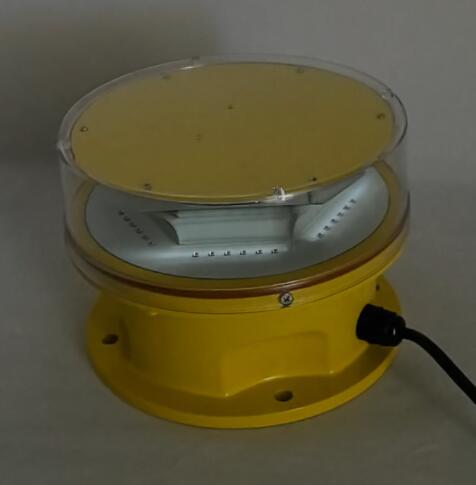Navigating the Rules: Understanding Aircraft Warning Lights Regulations for Safer Skies
In the complex and highly regulated world of aviation, aircraft warning lights regulations play a crucial role in ensuring the safety of both aircraft and ground-based structures. These regulations, established by aviation authorities worldwide, dictate the standards for the design, installation, and operation of warning lights on tall structures and aircraft. This article explores the importance of these regulations, their key components, and their impact on aviation safety.
The Importance of Aircraft Warning Lights Regulations
Aircraft warning lights are essential for preventing collisions between aircraft and tall structures, such as skyscrapers, communication towers, and wind turbines. These lights make obstacles visible to pilots, especially during nighttime or in poor weather conditions. To ensure their effectiveness, strict regulations govern their use, ensuring consistency and reliability across the aviation industry.
Key Regulatory Bodies
Several regulatory bodies are responsible for establishing and enforcing aircraft warning lights regulations:

Federal Aviation Administration (FAA): In the United States, the FAA sets the standards for obstruction lighting, including color, intensity, and flash patterns.
| Aircraft Warning Lights |
International Civil Aviation Organization (ICAO): The ICAO provides global guidelines for aviation safety, including the use of warning lights on tall structures and aircraft.
European Aviation Safety Agency (EASA): In Europe, EASA regulates the use of aircraft warning lights, ensuring compliance with regional and international standards.
| Aircraft Warning Light |
Key Components of Aircraft Warning Lights Regulations
Aircraft warning lights regulations cover several critical aspects to ensure their effectiveness:
Color and Intensity: Regulations specify the colors (typically red and white) and intensity levels of warning lights to ensure they are visible from a distance.
Flash Patterns: The flash patterns of warning lights are regulated to provide clear and consistent signals to pilots.
Placement and Spacing: Regulations dictate the placement and spacing of warning lights on structures to ensure they are visible from all angles.
Durability and Maintenance: Standards are set for the durability and maintenance of warning lights to ensure they remain operational in harsh environmental conditions.
Energy Efficiency: With a growing focus on sustainability, regulations are increasingly addressing the energy efficiency of warning lights, encouraging the use of LED technology.
Applications of Aircraft Warning Lights Regulations
Aircraft warning lights regulations apply to various industries and structures, including:
Tall Buildings: Skyscrapers and high-rise buildings must comply with regulations to ensure they are visible to aircraft.
Communication Towers: These structures, often located in remote areas, require warning lights to prevent collisions with low-flying aircraft.
Wind Turbines: As wind farms expand, regulations ensure that turbines are marked with warning lights to protect aviation safety.
Bridges and Dams: Large infrastructure projects must adhere to regulations to ensure they are visible to aircraft.
Challenges in Compliance
While aircraft warning lights regulations are essential, they present several challenges:
Regulatory Complexity: Navigating the varying regulations across different regions can be complex and time-consuming for manufacturers and operators.
Environmental Concerns: Balancing the need for bright, visible lights with the desire to minimize light pollution and energy consumption is an ongoing challenge.
Technological Advancements: Keeping up with rapid advancements in lighting technology and integrating them into existing systems requires continuous innovation.
Innovations and Future Trends
To address these challenges, the industry is embracing several innovations:
Adaptive Lighting Systems: These systems adjust brightness based on real-time visibility conditions, reducing light pollution and energy consumption.
Smart Technology: Integrating sensors and IoT (Internet of Things) technology allows warning lights to optimize their performance, enhancing safety and efficiency.
Solar-Powered Lights: These systems provide a sustainable and cost-effective solution, particularly in remote locations.
The Future of Aircraft Warning Lights Regulations
As the aviation industry continues to evolve, the role of aircraft warning lights regulations will become even more critical. Future trends may include:
Global Standardization: Efforts to harmonize regulations across regions could simplify compliance and improve safety worldwide.
Enhanced Customization: Regulations may evolve to allow more tailored solutions to meet the unique needs of different industries and applications.
Sustainability Focus: The industry is likely to prioritize eco-friendly solutions, such as solar-powered and energy-efficient warning lights.
Aircraft warning lights regulations are the backbone of aviation safety, ensuring that tall structures and aircraft remain visible and safe. By adhering to these regulations, manufacturers and operators can prevent collisions, protect lives, and maintain the integrity of aviation infrastructure. As technology advances and the world becomes more interconnected, the importance of these regulations will only grow.
In summary, aircraft warning lights regulations are not just rules—they are essential guidelines that illuminate the path to a safer and more secure future for aviation. Their impact is profound, safeguarding the skies for generations to come.
